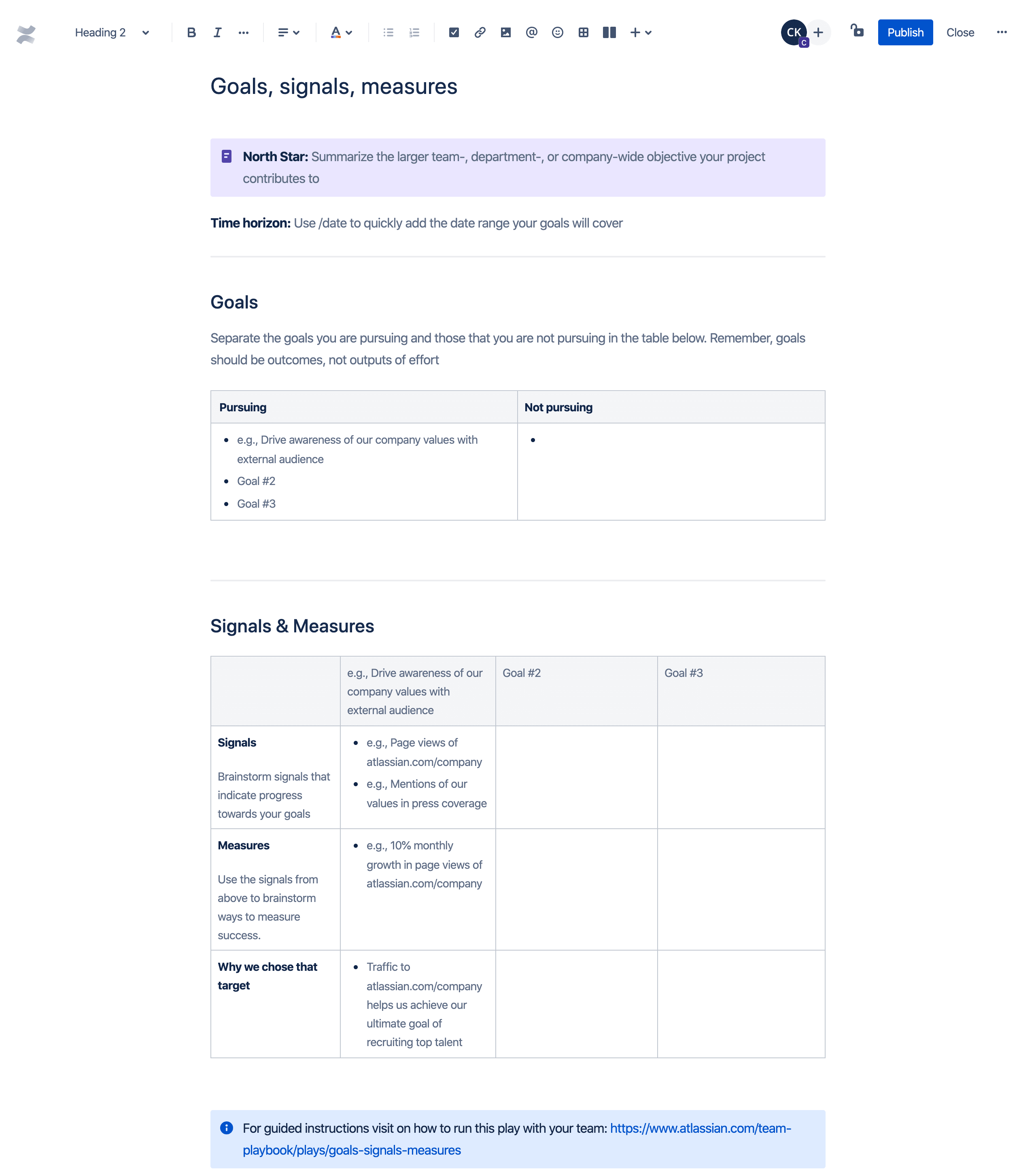Goals, signals, measures template
by Atlassian
Clear the noise and know what success looks like
KEY FEATURES
CATEGORIES

Is there any point in setting a goal if you don’t know when you’ve reached it? If you have a lot of big dreams but very few milestones that prove your success, you’re in the right spot. With the Goals, signals, and measures template (and the accompanying instructions from the Atlassian Team Playbook), you can set the goals that’ll keep you focused on the most valuable projects, define signals that indicate you're on the right path, and choose quantifiable success measures so you'll know when you've reached your destination.
- How to
- Why Confluence?
How to use the goals, signals, measures template
Step 1. Pick a direction
First, figure out your team’s main objective and timetable for reaching it. What as a company and a team are you trying to achieve and by when? You’ll use this as your North Star when you gather the team to brainstorm the steps you should take to achieve the specific goals of your project.
Step 2. A sticky for your thoughts
The next step is to shake loose everyone’s ideas about your goals. Using sticky notes, take about 15 minutes to have each member write down what they hope to gain. See the Atlassian Team Playbook and this piece on goal-setting to learn more about how to focus on the results of your efforts and not the efforts themselves.
Step 3. Less is more
Likely your brainstorm yielded a pile of sticky notes all covered with viable ideas. Take 10 minutes to narrow them down to the three that will provide the most value. After the team has decided, pull out the Goals, Signals, and Measures template and write those three down in the “Pursuing” area. Store all those other ideas in the “Not pursuing” area so that you have a record and can revisit them as possibilities at another time.
Step 4: See the signs
For each goal, take 5 minutes to brainstorm signals that’ll let you know you’re on the path to success. For example, if one of your goals is to increase the market share for your product, you might watch for increased traffic to your website as a signal you’re on the right track. Create a couple of signals for each goal.
Step 5. Measure it
A measure is a quantitative indicator of your success. Obviously, a measure should be measurable. “Our customers are mentioning our website more often” just won’t do. Instead, try something like “Clicks to our landing pages increase by 3% by the end of Q4.” Run through this exercise for all the goals and signals you’ve already laid out.
Step 6. Tell me why
The Why we chose that target area serves to help you circle back to your North Star. For each measure, note why this is the right direction and then take a step back to make sure that this reason matches up with your team’s overarching goal. If you get through the entire exercise and can answer yes to this question, you’re golden!
Related Templates
Competitive analysis
Track and analyze what your competitors do to stand out in a crowded landscape
Competitive analysis
Track and analyze what your competitors do to stand out in a crowded landscape
Customer interview report
Turn customer interviews into insights with the customer interview report.